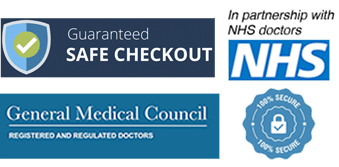How To Properly Document And Manage Employee Sick Leave
Managing sick leave can be a hurdle for employers and HR departments. A comprehensive attendance policy is vital in this process. This article sheds light on effective ways to track, document, and manage sick days.
Get ready to tackle absenteeism head-on!
Common Reasons for Excessive Sick Leave

Employees take excessive sick leave due to mental health issues or facing HR action.
Mental health issues
Mental health issues like stress, anxiety, and depression can make employees take more sick days. A good way to handle this is by keeping accurate records of time off. This helps in understanding how much work-related stress affects staff.
Workplaces should also ask for a fit note if someone is off because of mental health reasons. This proves they really need the break.
Creating a safe space for staff to talk about their mental health is important too. It can reveal why they are taking so much time off. Employers must check the medical documents given by employees to make sure the sickness is real.
A clear policy on managing absence due to mental health ensures everyone knows how things work. This makes it easier for employers and helps employees feel supported.
Employee facing HR action
Employees sometimes face HR action due to taking too much sick leave. This can happen if they miss work often without a doctor’s note or valid reason. The human resources department must check these absences properly.
They use absence management policies and request medical records to make sure all is fair.
The company has rules about sickness absence that everyone must follow. If someone breaks these rules, the HR team may need to talk with them. This could lead to meetings where they discuss why the employee is away so much and find ways to help.
It’s important for both sides to be open and honest during these talks.
Tips for Managing Sick Leave
To manage sick leave effectively, ensure employees receive proper payment and support. Clearly communicate expectations to all staff members and document absences diligently. Consider implementing disciplinary action when necessary to address excessive sick leave patterns.
Ensure proper payment and support
Paying employees correctly when they’re off sick is key. Follow the company’s sickness pay rules and use payroll to do this right. It shows staff that their welfare matters. Handling sick pay well keeps trust strong in workplace culture.
Offer support beyond just money, like access to employee assistance programs or reasonable adjustments for those coming back after a long illness. This can include working from home options or ergonomic changes at the workplace.
Such steps help in preventing burnout and show empathy towards health problems, making sure everyone feels valued and supported.
Clarify expectations
After ensuring employees receive proper support during sick leave, it’s vital to set clear expectations. Employers must tell their staff about the rules for reporting sickness. This includes how and when to notify their workplace if they cannot come in due to illness.
A strong attendance policy helps make these rules plain.
To manage this well, use a sickness absence toolkit designed for managers. It guides them on supporting team members responsibly. Keeping track of all sick days is also essential. Accurate records help you see any patterns or issues that need attention.
For longer absences, ask your employee for a fit note from their doctor. This confirms they genuinely need time off work. Clear steps like these ensure everyone understands what is required when dealing with health-related absences.
Document all absences
Documenting all absences is key to managing sick leave effectively. It makes sure everyone is treated fairly and helps keep track of who is off and why.
- Set up a system for tracking time off that everyone can use easily. This could be software that lets staff record when they’re sick.
- Make it clear to your team how they should tell you if they’re going to be off sick. This might mean sending an email, calling in, or using your company’s system to log their absence.
- Ask employees for a fit note from their doctor if they’re off sick for more than a few days. This proves they need the time off.
- Keep records of all sickness absences in one place. You could use a digital tool that tracks time off and keeps notes about each absence.
- Check the reasons for sickness absences regularly. Look for any patterns or issues like workplace stress or bullying that might be causing problems.
- Talk openly with employees who are often sick to find out if there’s a deeper reason for their absences, such as mental health issues or chronic diseases.
- Use data protection laws like GDPR to handle personal information about health carefully and respectfully.
- Have a clear policy on sickness absence that explains what happens if someone is off sick too much, including any support you offer and potential steps like performance reviews or disciplinary action.
9.Enummerate the rules on sickness absence clearly in job contracts and employee handbooks so there are no surprises.10.Provide training for line managers on how to manage sickness supportively, using tools like a sickness absence toolkit.
Following these steps can help reduce unfair dismissal cases and improve employee well-being in your workplace.
Consider disciplinary action
Employers must use a clear absence management policy. This helps handle short-term sick leave well. If an employee often takes sick leave without good reason, you may need to think about disciplinary steps.
It’s important to check the facts first. Ask for medical proof like fit notes from the staff member.
Talking openly with employees can uncover why they’re off work a lot. Sometimes, there might be deeper issues such as stress or workload problems. Fixing these can reduce sick days.
Yet, if sickness absence still happens too much without any real reason, it could lead to formal action according to your company’s rules on attendance and health policies.
Strategies for Preventing Future Issues
To prevent future issues, encourage a healthy work-life balance and well-being for employees. Emphasise the importance of addressing any underlying concerns and promoting a supportive working environment.
For more in-depth insights, delve into our full article.
Promote employee well-being
Promoting employee well-being is key to a healthy workplace. It reduces sick leave and boosts job satisfaction.
- Design a comprehensive attendance policy. This helps manage sickness absence effectively.
- Communicate clear rules about sickness absence to every team member. This ensures everyone knows what is expected if they need to take time off.
- Track time off accurately. Keeping close tabs on absences helps identify patterns that may point to bigger issues.
- Ask for fit notes from team members when they are unwell for long periods. Fit notes provide proof of health conditions and necessary adjustments.
- Create an expertly drafted absence management document. This tool guides managers on how to support their teams compassionately and legally.
- Verify sickness by requesting medical documents from the employee when needed. This check keeps the process honest and fair.
- Implement a clear policy and procedure for managing short-term absence efficiently, reducing disruptions in workflow.
- Encourage open conversations with employees about their wellness to find root causes of frequent sickness absences.
- Provide sickness absence toolkits to line managers, equipping them with resources to handle sick leave supportively.
- Review the performance of team members who take sick leave often, ensuring they receive the right support and adaptations at work.
Focusing on employee well-being leads naturally into strategies that discourage presenteeism, where staff come in sick because they feel pressured not to miss workdays.
Discourage presenteeism
Encouraging employees to take sick leave when needed is crucial for promoting a healthy work environment. Presenteeism, where employees come to work despite being unwell, can lead to decreased productivity and prolonged recovery time.
It’s essential for employers to create a culture that prioritizes employee well-being and encourages them to stay home when they are ill. This can be achieved by promoting flexible working options, offering paid sick days, and providing access to occupational health support.
By discouraging presenteeism, businesses can improve overall employee wellness and reduce the spread of illness in the workplace while maintaining productivity.
Address any underlying issues
To address any underlying issues related to employee sick leave, it’s important for employers to create a supportive environment that encourages open communication. Encouraging staff to speak freely about their concerns can help identify root causes of sickness absences.
Providing access to corporate wellness programmes, stress management resources, and mental health support can also contribute to addressing underlying issues affecting employees’ well-being and attendance.
Additionally, promoting a healthy work-life balance and fostering a positive organisational culture can further alleviate potential factors contributing to excessive sick leave.
By establishing an environment where employees feel comfortable discussing their challenges and proactively providing resources for well-being, employers can effectively address underlying issues that may impact sick leave while supporting their workforce’s overall health and productivity.
Conclusion
Properly managing employee sick leave is vital for a healthy workplace. Clear communication, accurate documentation, and supportive strategies are key. Encouraging open dialogue and addressing underlying issues can prevent future problems.
With a well-crafted attendance policy and proper support systems in place, managing sick leave will be efficient and beneficial for both the employer and employees.
FAQs
1. How do I start documenting employee sick leave?
Start by setting up a user-friendly system that tracks when employees are not at work due to illness. Include details like the date, reason for absence, and if it was paid time off or not.
2. What should I consider when an employee needs to work from home because they’re sick?
Make sure your contracts of employment cover working conditions for remote work. This includes how you’ll track their hours and ensure they have the right tools to do their job from home.
3. Can analytics help manage sick leave better?
Yes, using analytics can show patterns in absences that might point to bigger issues like workplace stress or poor working conditions. This information can help improve staff wellbeing.
4. How does mental health fit into managing sick leave?
Recognise mental health as a valid reason for incapacity just like physical health issues. Offer support such as reasonable adjustments to their role if needed.
5. Is it legal to check on employees’ social media if they pull a sickie?
While you might be tempted, browsing an employee’s social media for proof of dishonesty could lead to accusations of harassment or breach of confidentiality.
6. Could offering more paid sick leave reduce people pulling a sickie?
Offering sufficient paid time off can encourage honesty among employees about their health needs and reduce unscheduled absences due to fear of losing pay.


